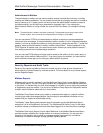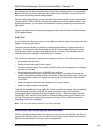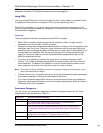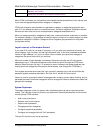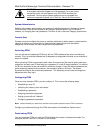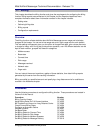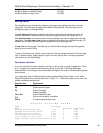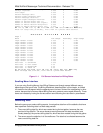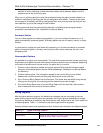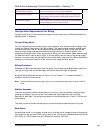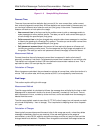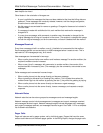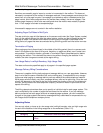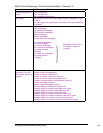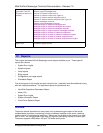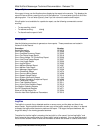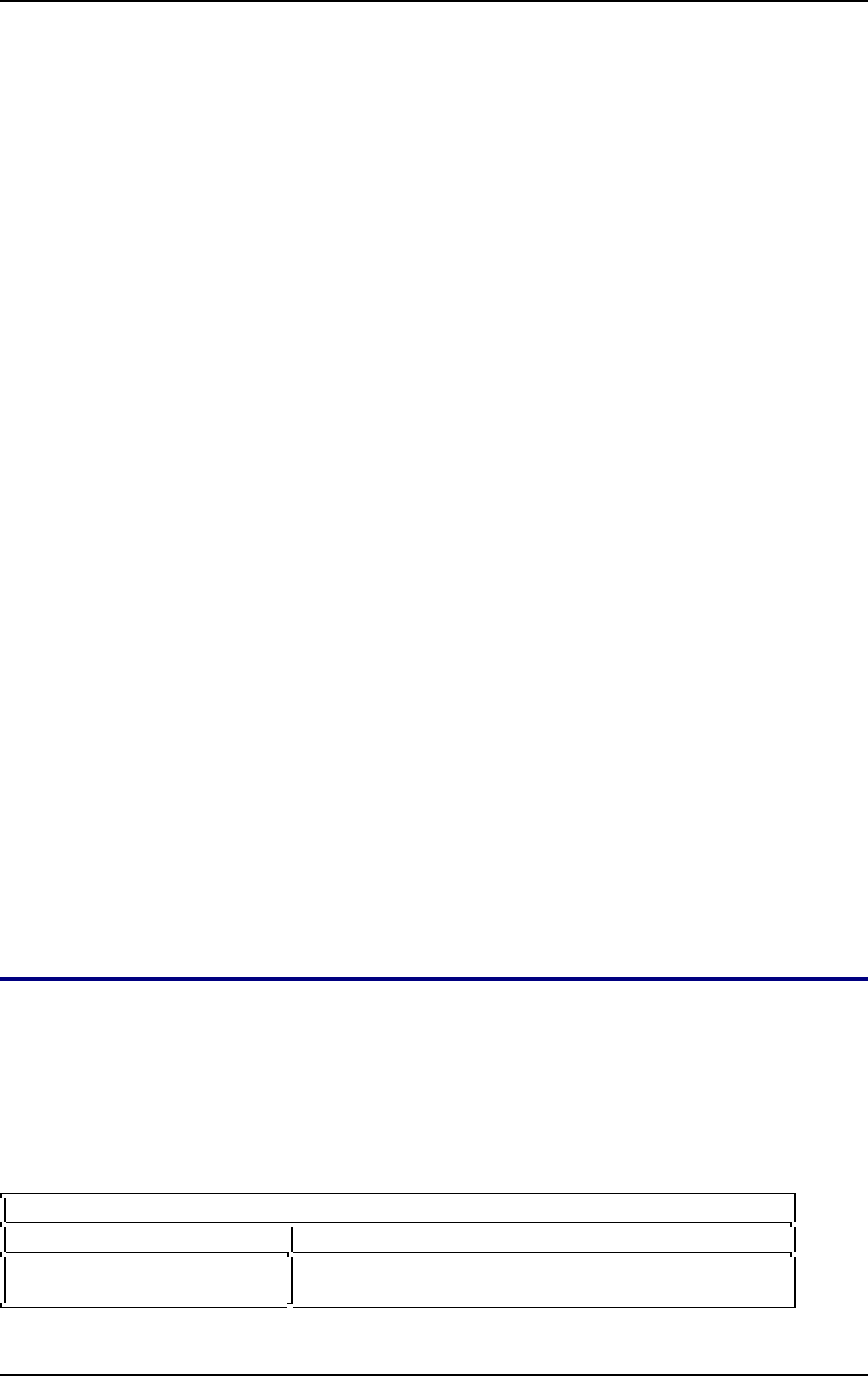
Mitel NuPoint Messenger Technical Documentation - Release 7.0
3. The data gathered in step 1 is subtracted from the mailbox statistics. This update zeros the
statistics in all the mailboxes (unless there was mailbox activity between steps 2 and 3 to
prepare them for the next billing cycle.
When you run a billing report, the value that is obtained during the gather for each statistic in a
mailbox is multiplied by the billing rate that you assigned to that statistic. The server then adds
the charges for all statistics with billing rates greater than zero, plus any base rate that you may
have specified, to give a total charge for each mailbox.
All billing data older than the previous billing data file is available using the regular backup
procedures recommended in the
Installation and Service Manual.
Automatic Gather
You can initiate a gather as needed (single gather), or you can configure the server to run a
gather automatically (automatic gather). Automatic gathers can be run weekly, monthly, or twice-
monthly.
In a busy server a gather can slow down call processing, so it is best to schedule an automatic
gather or request a gather in the early morning hours, when server resources are not in use
processing calls.
Unsuccessful Gathers
It is possible for a gather to be unsuccessful. The most likely cause would be a power loss during
the process, since gather can take from several minutes to several hours to complete, depending
on the size of the server and volume of calls. If a gather fails, you should:
1. Perform a server backup to diskette to save the previous billing data file that was created
during the unsuccessful gather (see the
NuPoint Messenger Installation and Service Manual
for directions).
2. Perform another gather. The information needed for the current billing is now divided
between the current and previous billing data files that are on the hard disk.
3. Run a Previous Billing Report from the hard disk. This shows what was billed during the last
billing cycle, which gives you a starting point for determining current charges.
4. Run both a Billing Report and a Previous Billing Report from the hard disk, then combine
them to determine the correct bill for each mailbox.
Billing Reports
After the server performs a gather, the statistics and charges that are calculated go into four
types of billing reports that the server can generate. Each report gives a breakdown of charges
for individual mailboxes by statistics, then calculates the total amount that is due. Each report has
a different purpose. Table 11-1 summarizes the report types and their purposes.
Samples of these reports and explanations of their contents are contained in the Reports chapter.
Table 11-1 Types of Billing Reports
Type of Report Purpose
Billing Report Shows current charges for each mailbox individually by
statistics; shows total current charges.
©
Copyright 2002, Mitel Networks Corporation 149



